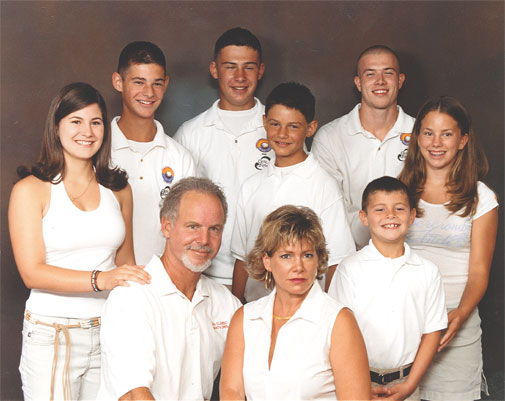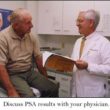Going for the Best Chance of Cure

That’s why, looking back, he wishes his general practitioner had been more up to date on recommended practices when Smith’s PSA first started going up and why he wishes he had educated himself more at the time.
Learning Too Late
His doctor told him not to worry when his PSA rose to 2.4, even though his father was treated for prostate cancer and, after a radical prostatectomy had radiation and then Lupron. He’s 86 now and pretty healthy.
“Now, I know that it’s not the PSA number but the rate of rise that gives the warning signal. And the recommended cutoff for biopsy had been lowered to the 2.5 and not the 4.0 range,” Smith said.
It was three years later, at age 58 and when his PSA was 4.4, that his doctor recommended a biopsy.
Shortly after, he got the call that his doctor wanted him to come in for a discussion of the biopsy results.
Smith, a graduate of West Point and practicing oral/maxillofacial surgeon in New Mexico, didn’t hesitate in choosing his treatment from the options given.
No Question About Treatment
“I don’t have fear in my life and I don’t want to live with fear. I’m healthy, active and have a family to take care of. I just marked off all options except the one that offered total removal of the cancer, a radical prostatectomy,” Smith said.
He thought about his age, his biopsy results, his Gleason Score and his good health and said to himself, “Why would I wait around for something to change? Now is my best chance for a cure.”
His immediate task was to find a surgeon.
“I like taking care of problems, not living with them. But I was concerned about picking a surgeon. I didn’t get the gold standard in the diagnostic stage. It created a lot of concern on my part that the cancer had gone outside the prostate in the three years before biopsy. For treatment, I wanted a surgeon in whom I had total confidence.”
Smith had done a six-week rotation on Dr. Catalona’s urology service many years before and had followed his career. From Smith’s own 25 years of practice, he knew that experience and showing results counted.
“I decided he was the surgeon for me and I googled him the day I got my biopsy results. The next day, I called his office.”
Smith didn’t want to go through surgery. He had never had a surgical procedure, much less a major one. But he knew what he wanted: “If you can cure it, cure it.”
Taking Off for Chicago
He and his wife, Mary Ann, took off for Chicago.
Smith said that he’d never forget the moment Dr. Catalona came to his bedside and said, “I got all the cancer and I spared your nerves.”
Then, the pathology report came back and it was good too.
“Yea for me, I was lucky. And Hoorah for Dr. Catalona,” Smith said.
It’s not as if Smith’s medical journey was easy.
“I can’t say that I didn’t think about whether this disease would kill me, but I was convinced I had a role in life given to me and I wasn’t done. My wife was more scared. But most important, she was with me every step of the way. ‘Whatever it takes, we’ll do it together,’ she said.”
Smith was in the hospital for two days and in a Chicago hotel across the street from the hospital for another five.
Walking and More Walking
“I walked around and around the third floor of that hotel – wearing my sweatpants and carrying my catheter bag around my waist with a hand towel to hide it. Dr. Catalona said to walk as much as I could, and I walked.”
When Smith got back to New Mexico, he walked a couple of miles a day. He went back to work twelve days after his surgery, performing two operations that first day. In six weeks, he was back to full practice.
“I like my work. I like treating patients. I like that they count on me. At times during the day, I was laying down with my feet up more than I wanted, but I needed to get back to my life. It was important to me.”
Shortly after, he was back to his exercise regime as well; golf, swimming, walking and lifting light weights.
Full Recovery
Being alive, being cancer free was his cause for celebration. Full recovery took awhile, though. For example, it took two years for him to know how his potency would be affected.
“I have to say that those injections I used didn’t do much to enhance my mood for intimacy, but I used them when I needed them. Now, I don’t need them. I did end up full function but less intense than before and probably with less interest as well,” Smith said.
But the sexual issues potentially created by the operation were actually one of the last things on his mind.
“It was a bonus that my nerves were spared, but mainly, I just wanted to be there for my kids and my wife,” he said.
Smith and his wife have a blended family of ten children. In Smith’s biological set, he has six sons and one daughter.
“I’ve told my sons that, especially with their history, when they’re 40, they need to get a baseline PSA. And they’ll know how to interpret all their following and annual PSA results,” Smith said.







